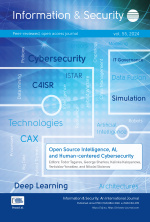Fostering a Comprehensive Security Approach: An Exploratory Case Study of CBRN Crisis Management Frameworks in Eleven European Countries
Source:
Information & Security: An International Journal,Keywords:
CBRN, comparative legal analysis, crisis management, European Union, first responders, law enforcement, preparedness, response, TerrorismAbstract:
Response to CBRN threats and events has gained momentum at the national, regional and also international level. Within the European Union, since the adoption of the EU Action Plan in 2009 Member States have been called to focus on this issue and develop appropriate response strategies. The increasing risk of CBRN events, including terrorist attacks, triggers the need to adopt an integrated approach, at the regional as well as at the national level. Tackling terrorist access to CBRN agents is currently considered a top priority for the European Union, but what is the framework and which are the instruments developed to prevent and respond to this kind of emergency? Is the EU sufficiently equipped to deal with the devastating effects of a CBRN event? Are the Member States up to this task? The present paper investigates the strengths and weaknesses of the existing tools. It does so relying on the results of a two-year research project funded by the EU, which, inter alia, analysed in a comparative way the normative framework of Italy and ten other EU Member States. The goal of this contribution is twofold. In the first place it will provide the reader with an overview of the key issues surfaced in the course of the comparative analysis against the backdrop of the EU legal and institutional frameworks and, secondly, it will point at the possible ways forward to harmonise and better regulate the response to the kind of events at stake and enhance the concept of security in Europe. The comparative analysis has shed light on several crucial issues that stress the urge to foster and implement an integrated response to CBRN events or threats. As emerged from the information collected and elaborated in this contribution, some important aspects (i.e. the coherence and soundness of the normative framework dealing with CBRN crises and emergency management; the effectiveness of the communication strategies and the need to improve and promote multi-agency training) still need to be duly addressed in order to fill the gaps identified.
